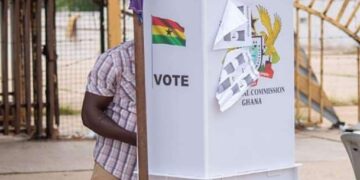The price of OPEC basket of fourteen crudes stood at $39.79 a barrel on Thursday, compared with $40.49 the previous day, according to OPEC Secretariat calculations.
The new OPEC Reference Basket of Crudes (ORB) is made up of the following: Saharan Blend (Algeria), Girassol (Angola), Oriente (Ecuador), Rabi Light (Gabon), Minas (Indonesia), Iran Heavy (Islamic Republic of Iran), Basra Light (Iraq), Kuwait Export (Kuwait), Es Sider (Libya), Bonny Light (Nigeria), Qatar Marine (Qatar), Arab Light (Saudi Arabia), Murban (UAE) and Merey (Venezuela).
Oil prices fell to fresh April lows on Friday as slowing economic growth threatened to worsen ongoing oversupply of crude and refined products.
International Brent crude oil futures were trading at $42.51 at 0617 GMT, down 19 cents, or 0.4 percent, from their previous close, the lowest since April.
U.S. West Texas Intermediate (WTI) crude fell 26 cents, or 0.6 percent, to $40.88 a barrel, slipping below $41 for the first time since April.
Both crude benchmarks are now down around 20 percent since their last peak in June.
Because refiners produced too much fuel from cheap crude, margins in the Americas, Europe and Asia have fallen sharply this year, eroding revenues for oil producers and refiners like Royal Dutch Shell, which this week reported poor results.
“Margins remain on a negative trajectory … This seems a clear signal that Atlantic Basin refined product markets are currently oversupplied,” Jason Gammel of U.S. investment bank Jefferies said on Friday.
Benchmark Singapore refinery margins are down 60 percent from their January highs to $4.28 per barrel, with stocks of product brimming near historic highs.
“We expect that the upcoming maintenance season combined with economic run cuts will correct the refined product markets… (and) the corresponding reduction in crude oil demand could weigh on Brent prices in the near term,” he added.
On the supply side, Iranian exports to Asia’s main buyers – China, India, Japan and South Korea – jumped 47.1 percent in June from a year ago to 1.72 million barrels per day, the highest levels in over four years.
The sales jump is the latest sign that Tehran’s aggressive moves to recoup market share, lost under international sanctions, are paying off.
Because of ongoing oversupply, U.S. bank Goldman Sachs said this week that it did not expect a big recovery in prices any time soon.
“We continue to expect that oil prices will remain in a $45 per barrel to $50 per barrel trading range through mid-2017 with near-term risks skewed to the downside,” the bank said.
Despite this, some analysts said recent price falls in oil had been overdone, especially as demand remains strong despite concerns over future economic growth.
“Investors have become overly bearish on oil as U.S. production and gasoline inventories continue to rise. We think those concerns are unwarranted.
Underlying demand in the U.S. remains robust,” ANZ bank said.
Source: Ghana/AccraFM.com

































